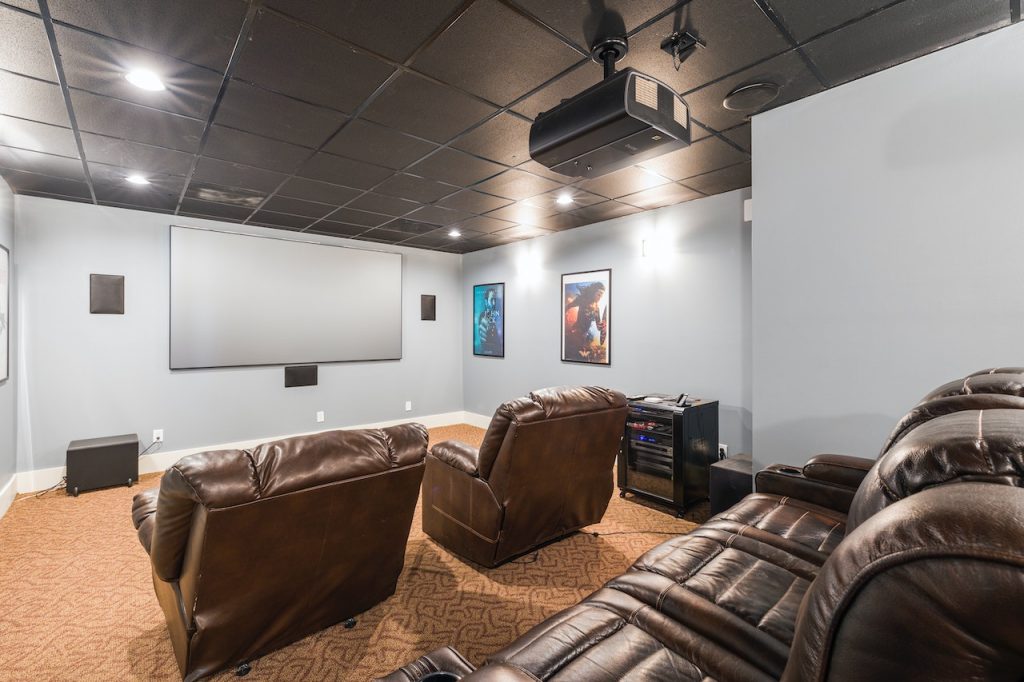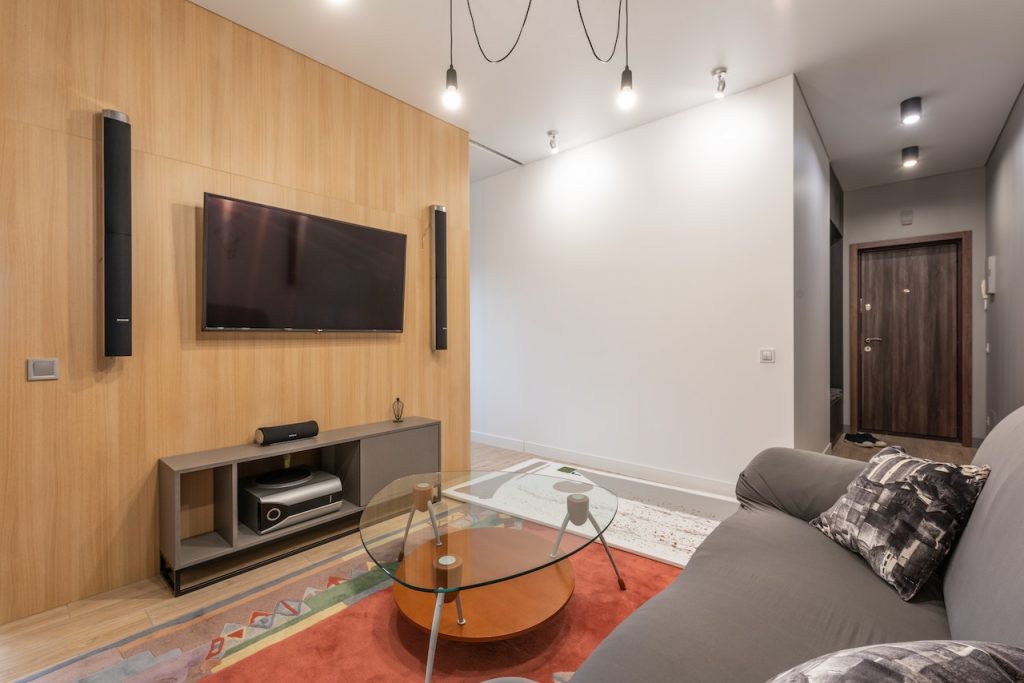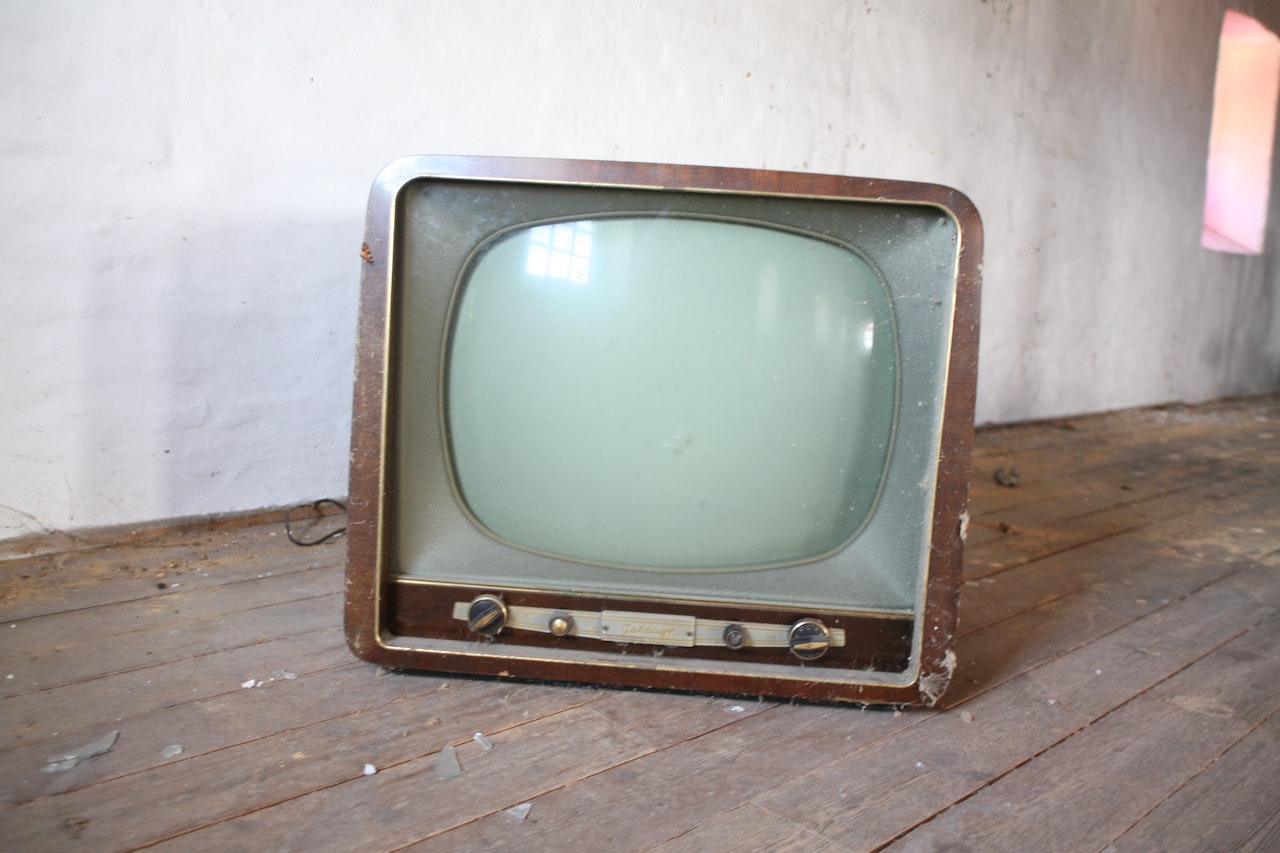Anyone who has worked any length of time in the AV industry – especially in residential AV – will have no doubt been asked something along the lines of “what is the best home cinema system?” And it’s not an easy question to answer in one breath. I’m sure everyone wishes there was an easy answer, and some AV installers do strive to be the answer.
I say “be the answer” as there are turn-key solutions available from design, through building, install and adding the finishing touches. However, there isn’t one single home cinema system that can be deemed the best as there are too many factors to consider in each scenario.

Where do you put a home cinema?
Factor number one, unless you’re building a house from the ground up and are dedicating an entire room for your personal home theatre, is the question of where to put the whole thing? Or things. After all, a home cinema system isn’t just a box, it’s a collection of amplifiers, speakers, seating, a screen and a projector. Not to mention your collection of blu-ray discs, remote controls and all the cabling to make the magic happen.
More often than not a home cinema starts with an empty room, a repurposed room, probably your eldest child’s who’s just moved out or gone off to university. In some cases it may be an entire floor, like a previously unused and now renovated loft space or basement. Needless to say, it’s an empty space – a blank canvas.
Now you’ve got the space allocated and prepared for your ultimate home cinema system creation, this is where a little science comes in. I say science, it’s not science – mostly just calculations, measurements and budgeting.
How do I pick the best home cinema elements?
The first thing to decide early on is what size screen you want to have as this will dictate whether a television or a projector and screen is the right choice. Generally speaking, given today’s TV tech, for display sizes up to 90” a television is the best option. It is possible to have a projector and screen setup with sub-90” size displays, but the cost of doing so compared to a television doesn’t make any sense.
There is a grey area middle ground in the form of “laser TVs” that cater to the 90” – 120” range of display sizes, but they start to tread on the price tags of lower end projector and screen setups. I digress, laser TVs are for another day.
From 90” up to 140” display sizes a projector and screen combo makes the most sense for a home cinema. It is possible to go beyond the 140” screen size, but that then becomes something more than just a home cinema – you’ll be giving the local Odeon a run for its money at that range.
Back to it. It’s important to pick the display size and type early on as that will indicate the type of speakers your home cinema system can be built with. That is to say, with a television, the speakers have to go around the screen, with a projector and screen combo, it’s possible to put the main speakers directly behind the display using acoustically transparent projection screens. Also, somewhat of importance, the cabling for a TV is vastly different to that of a projector.

How many speakers does my home cinema need?
If you want surround sound – and you’re going to want surround sound – the minimum number of speakers you need is 6. Three main speakers, two surrounds and a subwoofer. From there the number can only go up depending on how intricate a system you wish to have. A general guideline for very small rooms is a 5.1 or 7.1 system (with an addition of two rear speakers to the above mentioned layout). Small to medium sized rooms work best with the incorporation of overhead speakers to create an Atmos compatible system, that is a 5.1.2 all the way up to say a 7.2.4 system.
A quick side note, in those surround sound system numbers, the first digit is the number of “main” speakers, i.e.: those on the horizontal plane, the second digit denotes the number of subwoofers in use (yes, sometimes more than one is required) and the third digit is the number of overhead, height or upward firing speakers.
For larger and very large rooms, the options become almost limitless. Really it’s down to what you’re willing to put into it from a financial standpoint. For example, you could have a 13.4.4 surround sound system – yes, that’s thirteen main speakers, four subwoofers and four overhead speakers. They’ll make for an awesome experience.
Again, it’s worth deciding on the number of speakers early on as it has a direct impact on cabling – each speaker needs a cable. In turn, the number of speakers will also be an indication of the amplification requirements
What about powering the speakers and making audio meet video on the big screen?
So, once you’ve settled on a screen size and type, you’ve thrashed out your surround sound requirements, now you need amplifiers. These come in the form of AV receivers (or AVRs, for short). AVRs have the ability to take inputs from a multitude of devices, like DVD players, media streamers, etc. all fed through HDMI cables, and perform all of the surround sound processing and power each of the speakers. Except the subwoofers, they require additional amplifiers purely because of the power requirements to drive them – generally, one additional amplifier per subwoofer.
Be aware, not all AVRs are created equal. Some only offer stereo output (or 2.1), others are limited to having only 5 or 7 internal amplifiers and require additional amplifiers to drive more speakers. At least it’s possible to connect multiple AVRs using pre-out connections, provided the processor allows for it, for example, some AVRs with 9 internal amplifiers have the capability to process 13 surround channels, so would offer 4 pre-outs to connect an additional amplifier.
That covers the technological requirements for creating the best home cinema system. There are of course more factors to consider when creating a home cinema room – seating, carpet, room treatments, lighting, decorations, etc.
Seating and acoustic treatments are something we’ll cover in future articles as they require some in-depth explanation in themselves. I can’t forget to mention control (which we’ll cover in depth), especially for a large complex system – you don’t want to find yourself in a dark room fumbling between 6 different remote controls trying to get the projector on to the correct input, set the volume on all the amplifiers and get the DVD playing.

